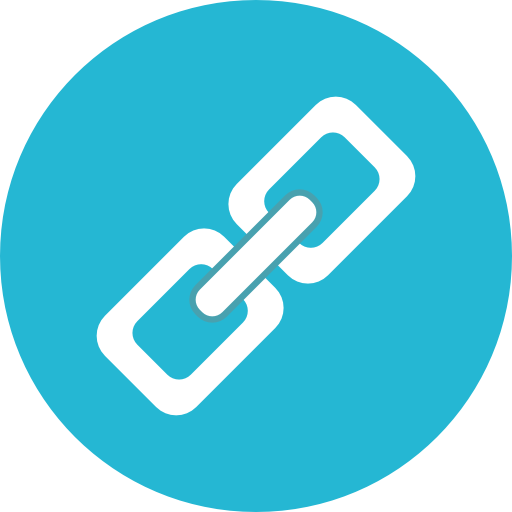دوره جامع فریمورک Qt
فریمورک Qt یک ابزار توسعه قدرتمند و چند پلتفرمی (cross-platform) است که در درجه اول برای ایجاد رابطهای گرافیکی کاربر (GUI) و همچنین برنامههای کاربردی برای دسکتاپ، موبایل و سیستمهای تعبیه شده (embedded systems) استفاده میشود. مجموعهای غنی از کتابخانه ها و ابزارها را برای طراحی برنامههای کاربردی جذاب، واکنشگرا (responsive) و با کارایی بالا فراهم میکند.
Qt از زبانهایی مانند C++ و Python پشتیبانی میکند و از جمله ویژگیهای آن میتوان به پشتیبانی از گرافیک ۲-بعدی /۳- بعدی، شبکه و مدیریت پایگاه داده و غیره اشاره کرد.
یادگیری فریمورک Qt برای توسعهدهندگان نرمافزار مشتاق، به ویژه برای کسانی که علاقهمند به توسعه برنامههای دسکتاپ یا تلفن همراه با رابطهای کاربری پیچیده هستند، بسیار مهم است.
یک معلم خصوصی میتواند این فرآیند یادگیری را با ارائه درسهای ساختاریافته، مثالهای عملی و پروژههای واقعی که نحوه استفاده مؤثر از ویژگیهای Qt، بهینهسازی کد و طراحی برنامههای کاربردی بصری را آموزش میدهند، تسریع بخشد و به شما امکان میدهد یک نمونه کار قوی بسازید و سریعتر برای ورود به بازار کار آماده شوید.
Chapter 1: Introduction to Qt Framework
- Lesson 1: What is Qt Framework?
- Lesson 2: History and Evolution of Qt
- Lesson 3: Applications and Use Cases of Qt
- Lesson 4: Installation and Setting Up Qt (Windows, Linux, macOS)
- Lesson 5: Overview of Qt Creator IDE
Chapter 2: Basics of Qt Programming
- Lesson 1: Qt Project Structure and File Types
- Lesson 2: Writing and Running Your First Qt Application
- Lesson 3: Understanding Qt’s Event-Driven Architecture
- Lesson 4: Qt Signals and Slots Mechanism
- Lesson 5: Debugging and Error Handling in Qt
Chapter 3: Qt Core Module
- Lesson 1: QtCore Overview and Key Features
- Lesson 2: Working with Qt Data Types (QString, QVariant, QDateTime)
- Lesson 3: File Handling and Input/Output Operations
- Lesson 4: Threading and Concurrency in Qt
- Lesson 5: Qt Containers (QList, QVector, QMap, QSet)
Chapter 4: GUI Development with Qt Widgets
- Lesson 1: Understanding Qt Widgets and Layouts
- Lesson 2: Working with Buttons, Labels, and Text Inputs
- Lesson 3: Dialogs and Message Boxes
- Lesson 4: Menus, Toolbars, and Actions
- Lesson 5: Customizing Widgets with Stylesheets (QSS)
Chapter 5: Advanced UI Development
- Lesson 1: Creating Custom Widgets
- Lesson 2: Using QGraphicsView for 2D Graphics
- Lesson 3: Drag and Drop in Qt Applications
- Lesson 4: Internationalization and Localization in Qt
- Lesson 5: Accessibility and High DPI Scaling in Qt
Chapter 6: Qt Model-View Framework
- Lesson 1: Understanding the Model-View-Controller (MVC) Architecture
- Lesson 2: Working with QTableView and QTreeView
- Lesson 3: Implementing Custom Models in Qt
- Lesson 4: Sorting and Filtering Data in Qt Views
- Lesson 5: Handling Large Data Sets Efficiently
Chapter 7: Qt Multimedia
- Lesson 1: Playing Audio and Video in Qt
- Lesson 2: Capturing Audio and Video from Devices
- Lesson 3: Working with Images and Image Processing
- Lesson 4: Creating Animations and Transitions
- Lesson 5: Using QML for Rich Multimedia Applications
Chapter 8: Qt Graphics and OpenGL
- Lesson 1: Introduction to Qt Graphics View Framework
- Lesson 2: Drawing 2D Graphics with QPainter
- Lesson 3: Integrating OpenGL with Qt
- Lesson 4: Working with Shaders in Qt
- Lesson 5: Creating Interactive 3D Graphics
Chapter 9: Networking in Qt
- Lesson 1: Understanding Qt Network Module
- Lesson 2: Sending and Receiving HTTP Requests with QNetworkAccessManager
- Lesson 3: Working with WebSockets in Qt
- Lesson 4: Implementing TCP and UDP Communication
- Lesson 5: Parsing JSON and XML Data in Qt
Chapter 10: Database Integration with Qt
- Lesson 1: Connecting to Databases with QtSQL
- Lesson 2: Performing CRUD Operations in Qt
- Lesson 3: Using SQLite, MySQL, and PostgreSQL with Qt
- Lesson 4: Implementing Transactions and Error Handling
- Lesson 5: Creating Database-Driven Applications
Chapter 11: Qt Quick and QML
- Lesson 1: Introduction to Qt Quick and QML
- Lesson 2: Writing QML Components and Layouts
- Lesson 3: Integrating QML with C++ Backend
- Lesson 4: Implementing State Management in QML
- Lesson 5: Creating Animations and Effects in QML
Chapter 12: Qt Web Technologies
- Lesson 1: Using QtWebEngine to Embed Web Content
- Lesson 2: Creating Hybrid Web Applications with Qt
- Lesson 3: Interfacing Between JavaScript and Qt
- Lesson 4: WebSockets and REST API in Qt
- Lesson 5: Security Considerations in Web Applications
Chapter 13: Multithreading and Concurrency
- Lesson 1: Introduction to Multithreading in Qt
- Lesson 2: Using QThread for Parallel Execution
- Lesson 3: Synchronization and Thread-Safe Programming
- Lesson 4: Managing Worker Threads in Qt Applications
- Lesson 5: Performance Optimization in Multithreaded Applications
Chapter 14: File Handling and Serialization
- Lesson 1: Reading and Writing Files in Qt
- Lesson 2: Working with Binary and Text Files
- Lesson 3: JSON and XML Serialization
- Lesson 4: Using QSettings for Application Configuration
- Lesson 5: Compressing and Extracting Files
Chapter 15: Creating Cross-Platform Applications
- Lesson 1: Understanding Qt’s Cross-Platform Capabilities
- Lesson 2: Compiling Qt Applications for Windows, Linux, and macOS
- Lesson 3: Deploying Qt Applications on Android and iOS
- Lesson 4: Managing Platform-Specific Differences in Qt
- Lesson 5: Optimizing Performance for Mobile Applications
Chapter 16: Building and Deploying Qt Applications
- Lesson 1: Compilation and Linking in Qt
- Lesson 2: Using CMake and QMake for Qt Projects
- Lesson 3: Packaging and Distributing Qt Applications
- Lesson 4: Code Signing and Security Considerations
- Lesson 5: Automating Builds with Continuous Integration
Chapter 17: Qt Test Framework
- Lesson 1: Introduction to Unit Testing in Qt
- Lesson 2: Writing Test Cases with QTestLib
- Lesson 3: Mocking and Test Automation in Qt
- Lesson 4: Debugging and Profiling Qt Applications
- Lesson 5: Best Practices for Test-Driven Development
Chapter 18: Embedded Development with Qt
- Lesson 1: Introduction to Qt for Embedded Systems
- Lesson 2: Configuring Qt for Raspberry Pi and Other Boards
- Lesson 3: Performance Optimization for Embedded Applications
- Lesson 4: Using Qt with IoT and Hardware Devices
- Lesson 5: Real-World Embedded Application Development
Chapter 19: Advanced Topics in Qt
- Lesson 1: Performance Profiling and Optimization
- Lesson 2: Advanced QML and Shader Programming
- Lesson 3: Writing High-Performance Qt Applications
- Lesson 4: Integrating Third-Party Libraries in Qt
- Lesson 5: Future Trends and New Features in Qt
Chapter 20: Introduction to Qt Design Studio
- Lesson 1: Overview of Qt Design Studio and its role in UI/UX development
- Lesson 2: Features and benefits of using Qt Design Studio
- Lesson 3: Comparison with Qt Creator for UI design
- Lesson 4: Installation and setup of Qt Design Studio
- Lesson 5: Navigating the Qt Design Studio interface
Chapter 21: Creating User Interfaces with Qt Design Studio
- Lesson 1: Designing UI layouts with Qt Quick Controls
- Lesson 2: Working with components and states in QML
- Lesson 3: Using assets: images, icons, and fonts
- Lesson 4: Adding animations and transitions
- Lesson 5: Designing for multiple screen sizes
Chapter 22: Working with 2D and 3D Graphics in Qt Design Studio
- Lesson 1: Importing and working with 2D assets
- Lesson 2: Integrating 3D models in UI design
- Lesson 3: Using shaders and materials in UI design
- Lesson 4: Animation and effects in 3D scenes
- Lesson 5: Optimizing graphics for performance
Chapter 23: Prototyping and Interactive UI Development
- Lesson 1: Creating interactive prototypes
- Lesson 2: Using Qt Bridge for Photoshop and Sketch
- Lesson 3: Exporting assets and integrating with Qt Creator
- Lesson 4: Adding interactions and transitions
- Lesson 5: Testing and debugging UI prototypes
Chapter 24: Advanced Customization and Deployment
- Lesson 1: Customizing themes and styles in Qt Design Studio
- Lesson 2: Extending UI functionality with custom QML components
- Lesson 3: Performance optimization for fluid UI interactions
- Lesson 4: Deploying UI designs to embedded and mobile devices
- Lesson 5: Best practices for UI development in Qt applications
Chapter 25: Introduction to AI and ML in Qt
- Lesson 1: Overview of AI and ML integration in Qt applications
- Lesson 2: Popular AI/ML frameworks compatible with Qt (TensorFlow, PyTorch, OpenCV)
- Lesson 3: Use cases of AI/ML in Qt applications (image recognition, predictive analytics, automation)
- Lesson 4: Setting up AI/ML environment in Qt
- Lesson 5: Introduction to Qt for Python and AI integration
Chapter 26: Using OpenCV with Qt for Computer Vision Applications
- Lesson 1: Installing and configuring OpenCV with Qt
- Lesson 2: Capturing and processing real-time video in Qt
- Lesson 3: Object detection and tracking in Qt applications
- Lesson 4: Image filtering and enhancement with OpenCV
- Lesson 5: Face recognition and motion detection integration
Chapter 27: Integrating TensorFlow and PyTorch with Qt
- Lesson 1: Installing and setting up TensorFlow/PyTorch in a Qt project
- Lesson 2: Running AI models in Qt applications
- Lesson 3: Creating a simple AI-powered chatbot in Qt
- Lesson 4: Implementing deep learning for image classification in Qt
- Lesson 5: Optimizing model inference for real-time performance
Chapter 28: AI-Powered Data Visualization in Qt
- Lesson 1: Using AI to analyze and visualize large datasets
- Lesson 2: Creating dynamic charts and graphs with Qt Charts
- Lesson 3: Predictive analytics using AI in Qt applications
- Lesson 4: Integrating machine learning for anomaly detection
- Lesson 5: Deploying AI-driven dashboards in Qt
Chapter 29: Deploying AI-Enabled Qt Applications
- Lesson 1: Packaging AI models with Qt applications
- Lesson 2: Optimizing AI applications for embedded and mobile devices
- Lesson 3: Running AI inference on edge devices using Qt
- Lesson 4: AI and ML performance optimization techniques in Qt
- Lesson 5: Future trends and best practices for AI integration in Qt applications




